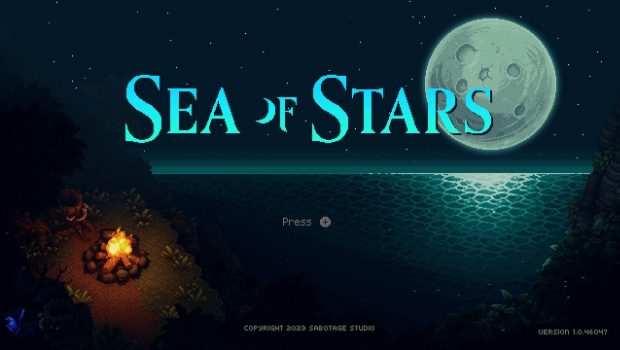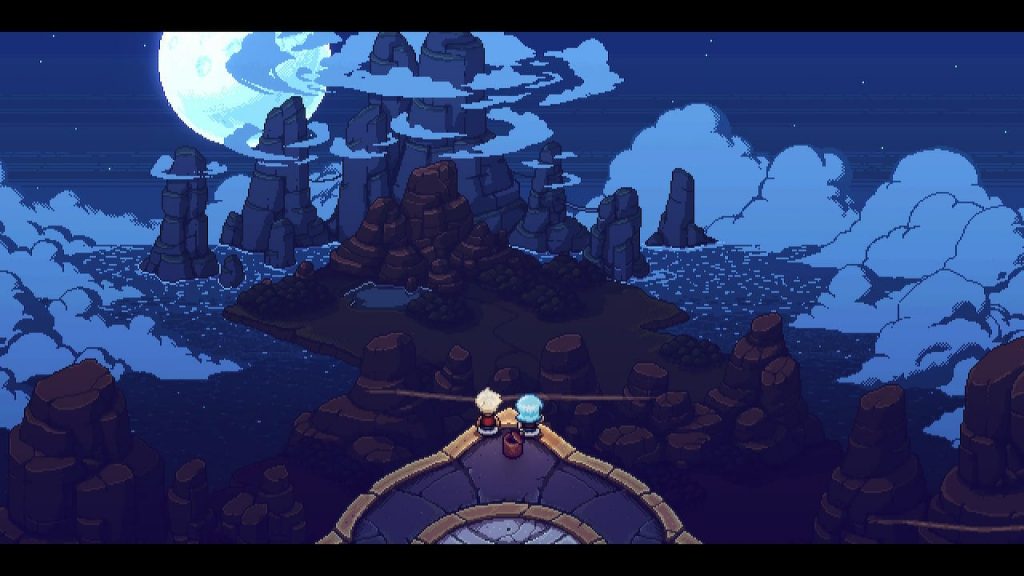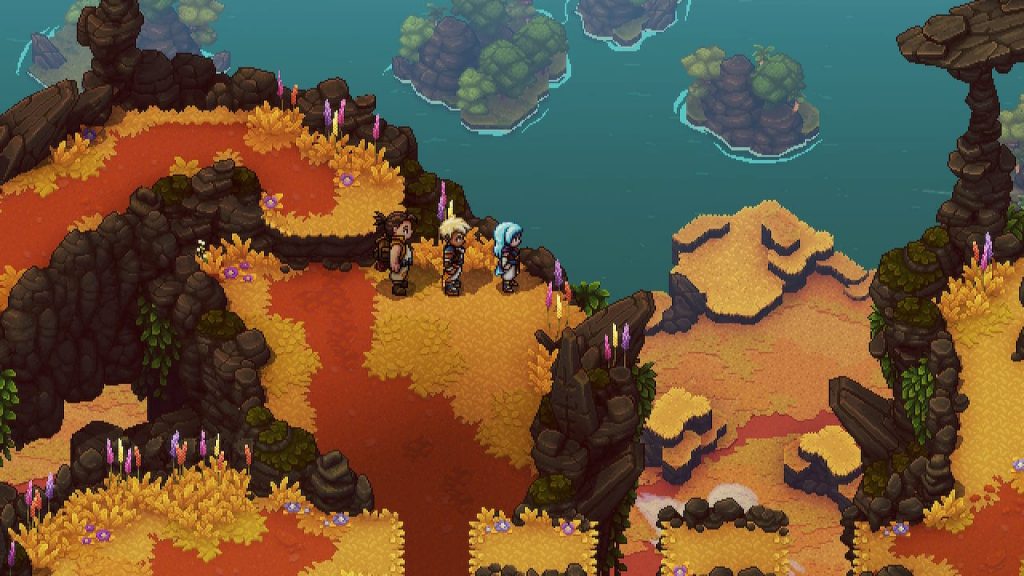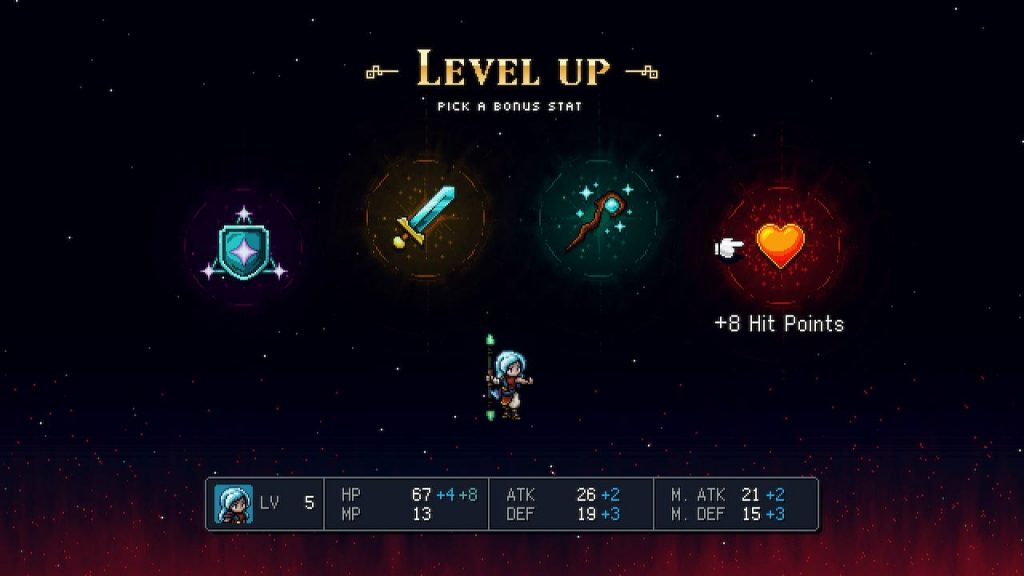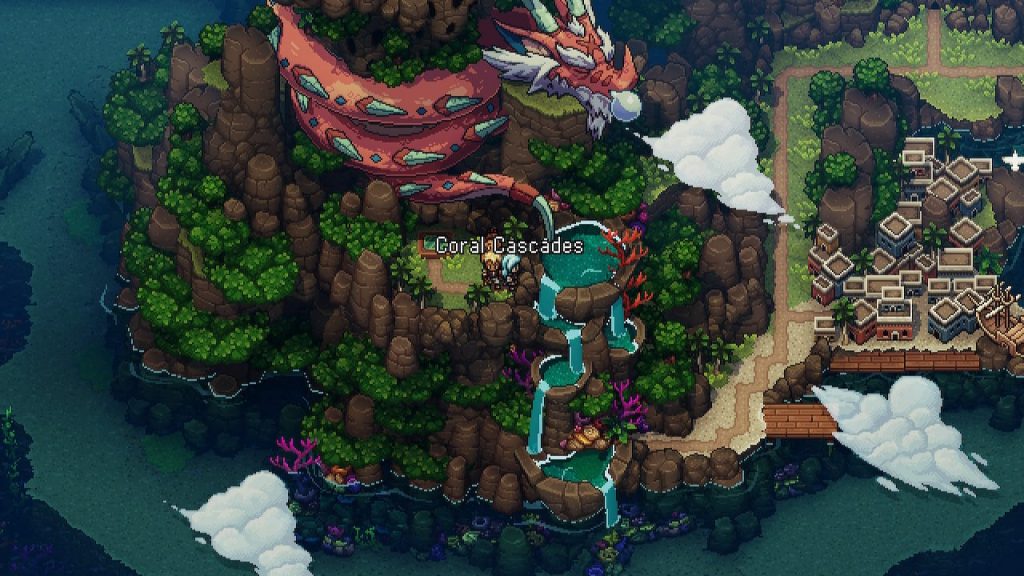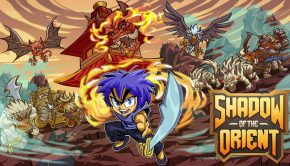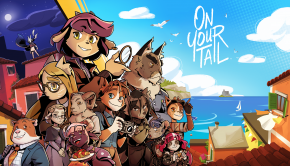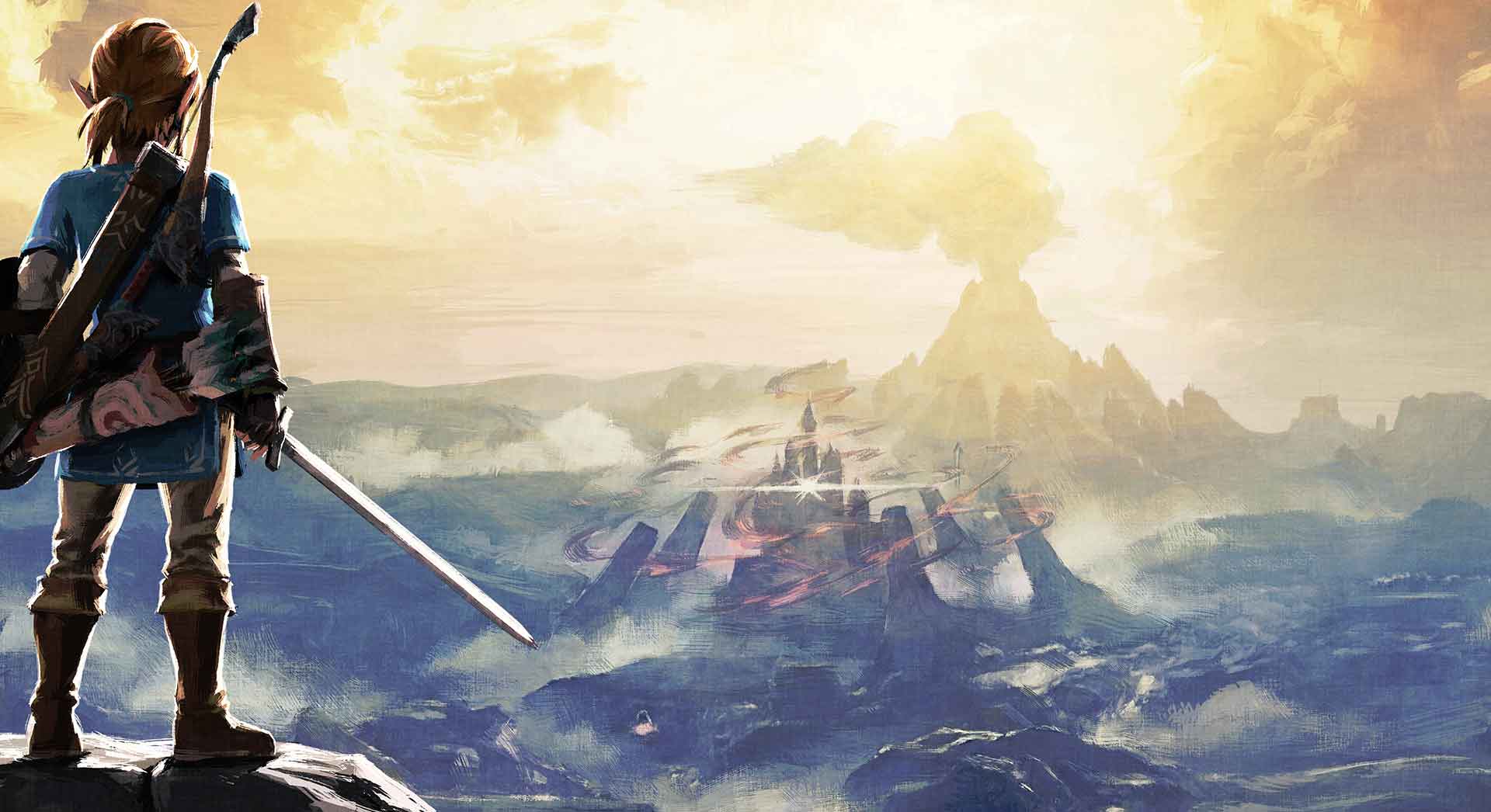Sea of Stars Switch Review
Summary: Featuring excellently paced turn based combat and a memorable story taking place in a beautiful, interactive world to explore – Sea of Stars is a dream come true for 90’s RPG fans, RPG fans, and fans of great video games.
4.7
Interactive RPG
Ah, the 90’s. I may have only existed in them for a few months, but I sure can tell when a game is inspired by RPGs from that time period. That brings me to the subject of this review: Sea of Stars. This game stars Valere and Zale, who are born into the world as destined Solstice Warriors – the only ones capable of learning sun/moon magic. Only this magic can hurt Dwellers – powerful monsters created by the evil Fleshmancer – and as such, our heroes take up their duty to fight against them and bring peace to their realm. Many will look at Sea of Stars within the context of the games it takes its inspiration from, but I’m really just looking for a fun RPG here. Does the game deliver on that front? Let’s find out.
Sea of Stars’s turn based combat system focuses on the interplay between powerful skills that use up Magic Points (MP), and basic attacks that restore said MP. The latter also produce “Live Mana”, which can then be used to boost any move with a portion of a character’s magic stat. Increasing damage can also be done by adequately timing button presses while performing attacks/skills. This in turn helps in charging up your last offensive ability: the combo meter, which you can fill up a maximum of three times. This translates to a maximum of three combo points, spendable on different combo moves with different costs (one, two or three combo points) to execute – every combination of two characters has their own one. These are just as involved as the attacks and skills – pressing buttons at the right time dishes out more punishment.
A good offense in Sea of Stars is also a good defense. Coming into contact with enemies on the overworld starts a battle right then and there, with no transition to a different screen – accompanying these enemies is a number showing after how many turns they will attack, and potentially a sequence of attributes to break their lock. Every attack – basic, skill or combo – has one or more attributes, ranging from sword to moon. To break enemy’s locks, you simply need to use attacks with the appropriate attributes – once the lock is broken, it cancels the enemy’s attack completely. If you fail to break the lock fully and the enemy does get to attack, you can once again use good timing to block and reduce damage. This mechanic is nicely balanced – it doesn’t feel overly punishing if you fail, but successfully blocking does feel great. Even the minor damage reduction is welcome, as well as the fact that it also charges up the combo meter just like successfully timing attacks. When it comes to your three party members, they can act in any order – with each party member’s action taking up one turn. In order for a party member to then act again, the three current active party members must all have acted at least once.
Something I have noticed about playing a lot of (turn based) RPGs is that my investment in them early on frequently depends on the story and/or characters, rather than the gameplay. RPG gameplay in the beginning often doesn’t require much thinking/effort, and only starts to really get good around 1/3rd of the way in once the game feels comfortable enough to give the player more interesting tools. Sea of Stars does not have this problem – even the early fights are very enjoyable because everything about the battle system I’ve mentioned so far is already introduced at that point. This had the potential to make the later encounters unvaried, but no – every time the combat started getting a little stale, the game would introduce a new layer to it. This ability to consistently keep the battle system engaging despite its relative simplicity is easily one of Sea of Stars’s biggest strengths.
The combat is also generally very approachable, especially through the many diverse options to lower the difficulty ever so slightly. A sound effect that plays when you successfully time a hit or block, a general damage reduction of 30% to enemy attacks, doubling the HP of your entire party alongside an auto-heal after every battle, a 30% chance to still take less damage even after failing to block an attack – all of these (and they’re even combinable) do a great job of making the game a bit easier or more convenient without just taking away aspects of the gameplay. This freedom extends to how you want to learn the ins and outs of combat – tutorials are mostly skippable and they let you discover each character’s abilities on your own.
I will say that Sea of Stars doesn’t have too much in the way of player expression though – outside of some sparse stat changing equipment and being able to choose a stat to give bonus points to after a level up, parties are going to look fairly similar between different playthroughs. I don’t mind this, but it is a very linear RPG – you’ll pretty much always be moving the story forward and most of the game’s areas are designed to only go through once. Because of this, the fact that fast travel is unlocked really late is not the worst thing ever – however, there are a few locations that you will want to return to semi-regularly and not being able to go there quickly is slightly annoying. Not helping matters is that there are no maps of these areas either – admittedly, the design of most of the locations do not lend themselves well to having a map and it may take away suspense. Even so, I don’t think being able to at least see the general layout on subsequent visits would hurt.
Do not get me wrong though – these areas are an absolute joy to explore. Just like enemy encounters, traversing the overworld feels interactive in a way most RPGs of this nature typically aren’t thanks to one simple mechanic: in order to jump on and off ledges – even the tiniest ones – you have to press a button while “hugging” it. At first I thought this would get annoying to have to keep doing, but I was dead wrong – because it makes all of your movement through the world deliberate. When you jump on that ledge it genuinely feels like you did that – there’s also no accidentally careening off cliffs and it makes it easier to tell where you can and can’t go. This mechanic would not work as well as it does if the world design wasn’t as solid as it is – lots of appropriately themed puzzles to solve in order to move forward, and shortcuts that open up as soon as you need them.
This puzzle based world design does lead to the areas feeling a bit too “video gamey” sometimes. You can see that it was designed as a video game world first, and as a believable place that people could reasonably live in second. Sea of Stars is certainly not the only game to have a world with mostly linear paths that are only traversable with the tools of the main characters – but seriously, a good half of this world is basically completely inaccessible to its general population. As I said, exploration is fun, so is this a big deal? To be honest, not really – it did made me less immersed in the game’s setting though, and that is still unfortunate.
No, Sea of Stars immerses me through different aspects – the biggest one being the music. This is up there as one of the most atmospheric soundtracks of any game I’ve played – and it doesn’t even have to forgo being catchy to accomplish this. Whether it’s walking through a town inhabited by mole people invoking a sense of whimsy, an island covered in eternal night making me anxious, or trial grounds in the clouds feeling ethereal and otherworldly – these area themes set the mood like nothing else. Then, as if we aren’t spoiled enough, the boss themes are somehow even better. Most of them have not left my head ever since I started playing – and as far as I’m concerned they can stay there forever.
My head has also been full of thoughts about Sea of Stars’s story – good thoughts, but also bad thoughts. On one hand, it has cool scenarios, amusing dialogue and interesting lore – stuff that I’ll probably remember forever. On the other, it has virtually no themes, is lacking in meaningful character arcs, and has a lot of intriguing set-up with mostly anti-climactic pay-offs. Our two Solstice Warriors are also sadly pretty bland – their magicless, incredibly supportive and positive best friend Garl outshines them every step of the way. It’s him who is solely responsible for nearly all of the game’s most memorable moments, while Valere and Zale mainly feel like tools of the plot. Considering their status as the “chosen ones”, this may have been at least somewhat intentional – but even if it was, it doesn’t make me any more invested in them as characters. Overall, I did have a good time with the story, it’s certainly never boring – it just doesn’t quite live up to its full potential.
One thing that helped in making Sea of Stars’s plot more memorable is the way that its most dramatic locations and set pieces are visualized. I don’t think I’ll forget the haunted mansion enveloped in tiny pieces of skull-shaped fog – representative of the ghosts that are trapped in the place – any time soon. Some of the big story moments are even punctuated by animated cutscenes that look positively gorgeous. The sun and moon are naturally this game’s most prevalent thematic element, and the artists took that opportunity and ran with it to go all out on the lighting – the dark, dreary places that are only lit up by the few occasional candles stand out all the more against the vibrant and colorful areas. It does mean that when Sea of Stars is dark, it is dark – sometimes you can barely see anything. I can somewhat appreciate this clearly deliberate creative choice in hindsight – didn’t make those sections particularly fun though. I’d much rather look at the characters and enemies with their expressive animations and portraits – those are the true highlight of the game’s graphics in my eyes.
Final Thoughts
I love my RPGs that have a billion sidequests and take 100 hours to complete, but I can understand the people who call them bloated and don’t want to play a single game for that long. To those people, I give you Sea of Stars. An RPG (that only costs a bit more than half price, mind you) with around 30-40 hours of straight-up good content – all killer, no filler. My minor nitpicks do not even come close to truly hampering the massive enjoyment I got from my adventure with the Solstice Warriors – engaging and interactive in both its battle system and world design, a beautifully atmospheric soundtrack, and charming as heck presentation. Whether you’re looking for an amazing 90’s inspired RPG or just an amazing RPG in general – Sea of Stars is well worth checking out.


